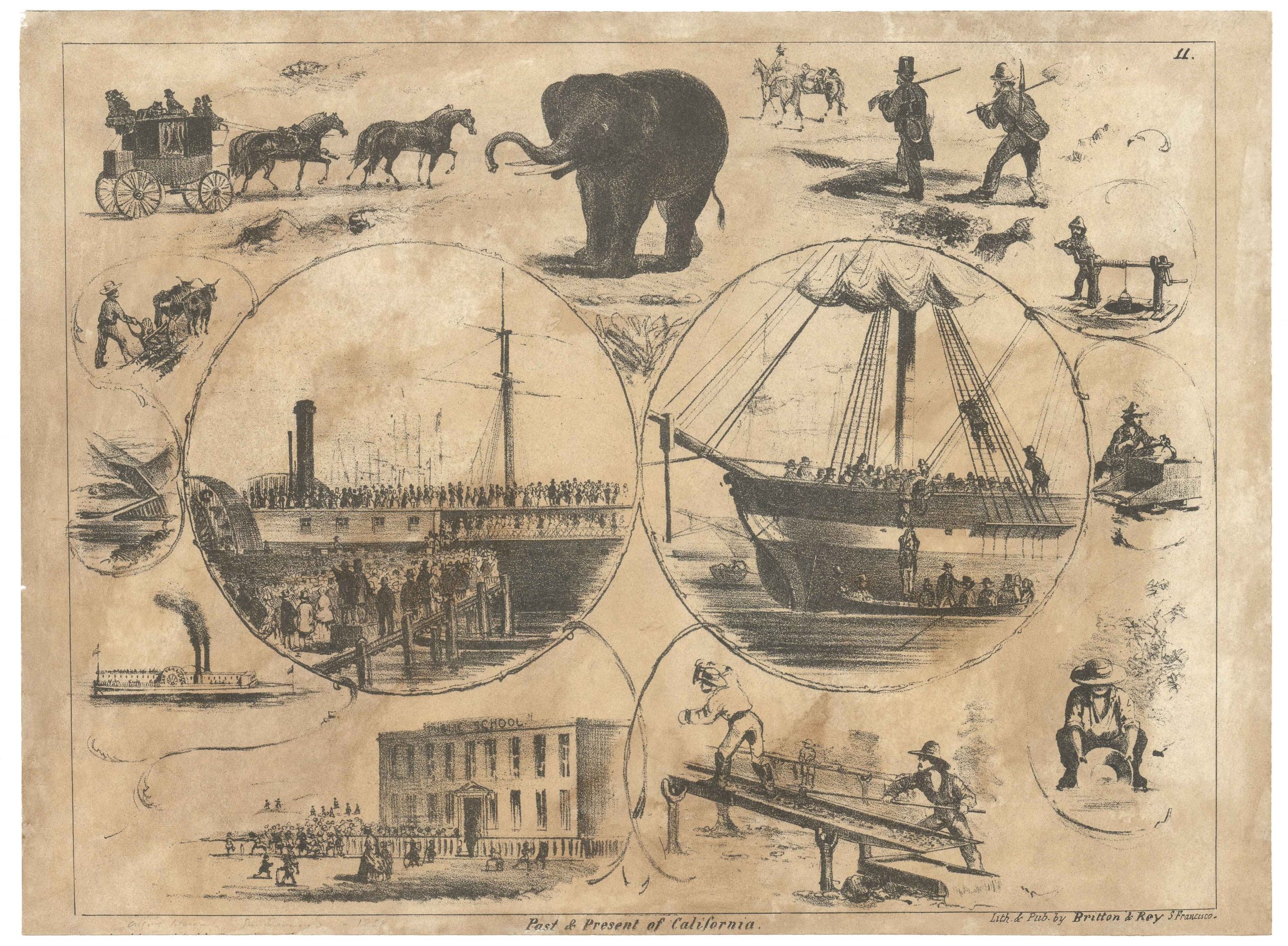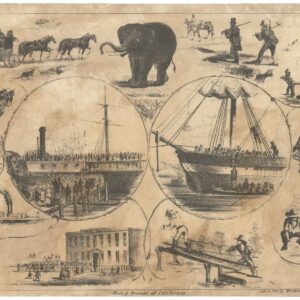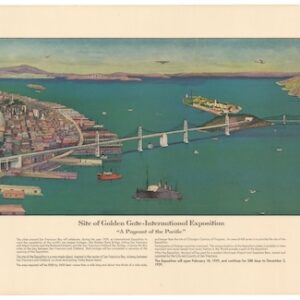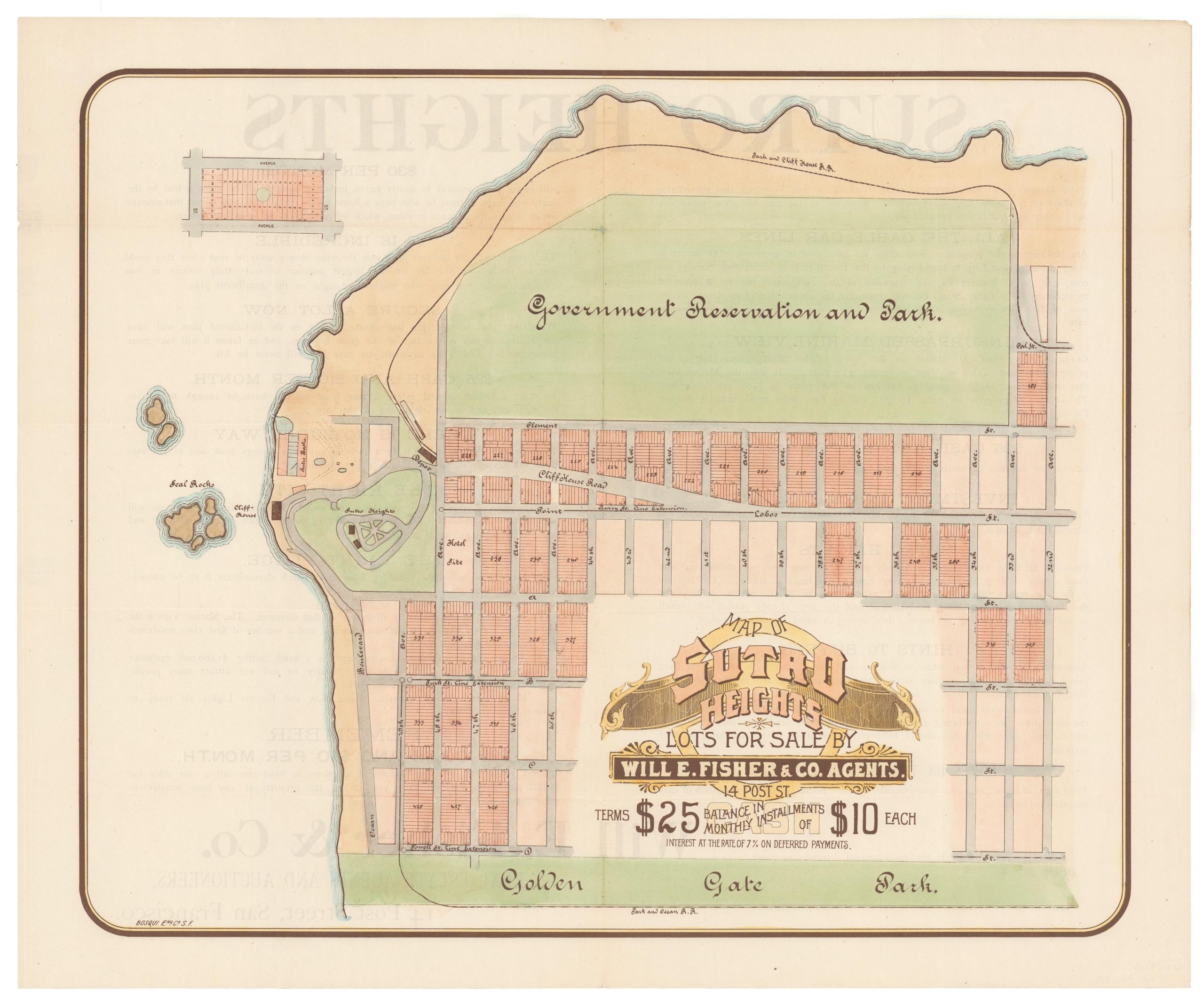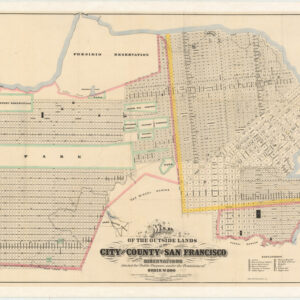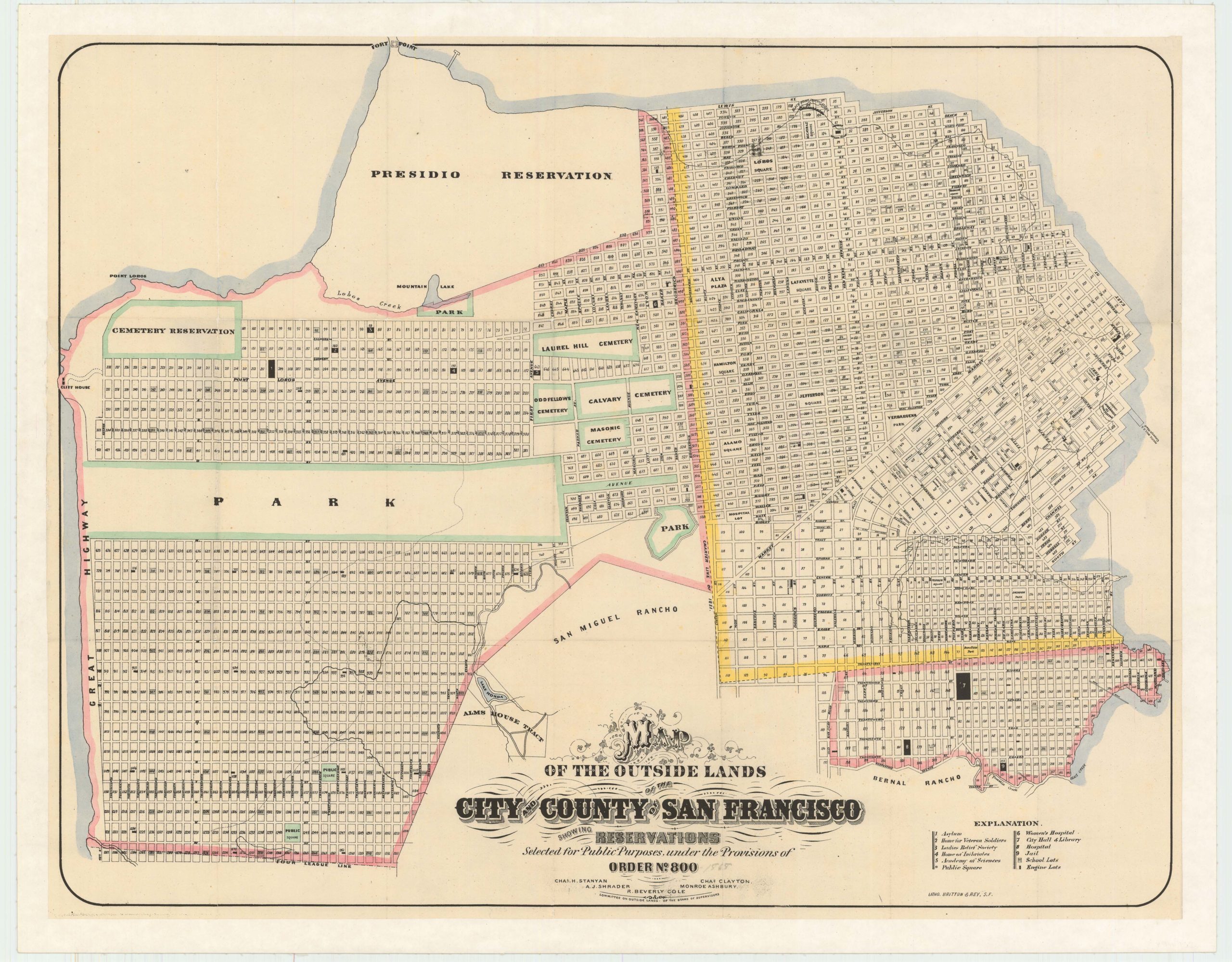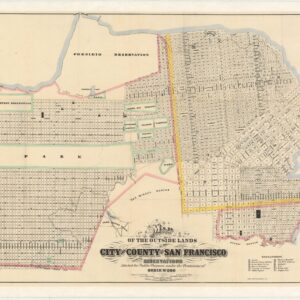Rare 1861 first edition of Wackenreuder’s famous map of San Francisco.
City and County of San Francisco compiled from official surveys and sectioned in accordance with U.S. surveys
Out of stock
Description
Rare 1861 edition of this seminal map of San Francisco by San Mateo County surveyor V. Wackenreuder, lithographed by Britton & Rey, and published by Langley. This was one of the first maps to extend from Buri Buri Rancho (later South San Francisco) north across the Golden Gate to Marin County.
This map features a lot of important topographic detail, documenting the peninsula in the midst of major changes to its landscape, especially the sand dunes of the Outside Lands and rivers and creeks which today no longer exist or have been significantly transformed.
Equally important is the plotting of important early property owners and ranchos, along with infrastructure projects such as the path of the Spring Valley Water Works from Pilarcitos Creek to Laguna Honda reservoir and the San Francisco Water Works aqueduct to the still-standing reservoir on Russian Hill.
Noe Valley at this time was called Horner’s Addition, and a grid has been drawn here. Today the neighborhood is named after José de Jesús Noé, the last Mexican alcalde (mayor) of Yerba Buena, who owned what is now Noe Valley as part of his Rancho San Miguel. John Meirs Horner was a Mormon immigrant who bought the land from Noé a few years before, in 1854.
At the top right are three insets of South Farallon Island.
Overall, this map documents the city of San Francisco at a moment in which the city and its residents were locked in ongoing legal battles over land claims on two parallel levels: whether the land was part of the city or the U.S. federal government, and who owned private individual lots.
Cartographer(s):
Britton & Rey (1852 – 1906) was a lithographic printing firm based in San Francisco and founded by Joseph Britton and Jacques Joseph Rey in 1852. Especially during the second half of the 19th century, Britton and Rey became the leading lithography firm in San Francisco, and probably California. Among their many publications were birds-eye-views of Californian cities, depictions of the exquisite landscapes, stock certificates, and no least maps. While Rey was the primary artist, Britton worked not only as the main lithographer but was essentially also the man running the business. In addition to their own material, the firm reproduced the works of other American artists like Thomas Almond Ayres (1816 – 1858), George Holbrook Baker (1824 – 1906), Charles Christian Nahl (1818 – 1878), and Frederick August Wenderoth (1819 – 1884). Following Rey’s death in 1892 Britton passed the form on to Rey’s son, Valentine J. A. Rey, who ran it until the great earthquake and fire of 1906 destroyed most of the company’s assets.
Joseph Britton (1825 – July 18, 1901) was a lithographer and the co-founder of the prominent San Francisco lithography studio Britton and Rey. He was also a civic leader in San Francisco, serving on the Board of Supervisors and helping to draft a new city charter. In 1852, he became active in lithography and publishing, first under the name ‘Pollard and Britton,’ and then ‘Britton and Rey,’ a printing company founded with his friend and eventual brother-in-law Jacques Joseph Rey. Britton and Rey became the premier lithographic and engraving studio of the Gold Rush era, producing letter sheets, maps, and artistic prints.
Jacques Joseph Rey (1820 – 1892) was a French engraver and lithographer born in the Alsatian town of Bouxwiller. At the age of about 30, he emigrated to America, eventually settling in California. Here, he soon entered into a partnership with local entrepreneur and civic leader Joseph Britton. Three years later, Rey also married Britton’s sister, allowing his business partner and brother-in-law Britton to live in their house with them. Rey and Britton were not only an important part of the San Francisco printing and publishing scene but also owned a plumbing and gas-fitting firm. In the early years, both men would sometimes partner up with others on specific projects, but by the late 1860s, their partnership was more or less exclusive.
Henry G. LangleyHenry G. Langley was a prominent figure in 19th-century San Francisco, best known for his role in publishing city directories. Starting in the 1850s, his “Langley’s San Francisco Directory” became an essential resource, chronicling the city’s evolution.
These directories, which are precursors to today’s phone books, listed information about residents, their professions, addresses, and also showcased ads from local businesses. They also contained comprehensive details about the city’s streets, government entities, churches, schools, and more.
With San Francisco undergoing rapid growth due to the California Gold Rush, Langley’s directories offer an invaluable snapshot of its transformation into a major American city. As the city expanded, so did the scope of Langley’s work, with directories eventually encompassing not just San Francisco’s core, but also its surrounding areas. With the advent of the telephone and subsequent telephone directories, the significance of city directories like Langley’s dwindled. Nevertheless, his contributions remain an integral part of San Francisco’s historical fabric. Many of these directories have since been digitized, offering a window into the city’s storied past for anyone with an interest.
Vitus WackenreuderVitus Wackenreuder (1823-1887) was a German draftsman and surveyor known for his contributions to cartography in the late 18th and early 19th centuries. He worked primarily in the Kingdom of Hanover (modern-day Germany) before arriving in California in 1849.
Condition Description
Backed on Japanese tissue paper with some loss along folds.
References
Woodbridge, Sally Byrne., and David Rumsey. San Francisco in maps & views. New York: Rizzoli International Publications, 2009, p. 66-8. Rumsey 3867.000.

